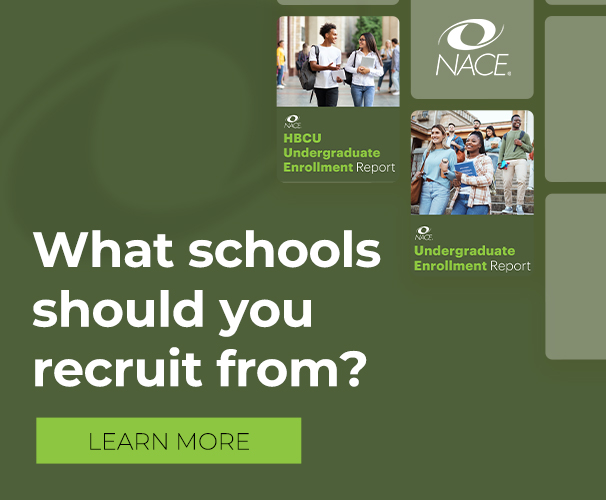Spotlight for Career Services Professionals
When creating career programs, resources, and services for marginalized student populations, the Career Catalysts team at Stanford University starts with identifying issues and needs through focus groups, research, and outcomes.
“We create, discuss, assess, and develop an action plan considering the available resources and potential allies,” says Arame Mbodj, assistant director of Career Catalysts, BEAM, Stanford Career Education.
“We then implement the action plan working together with the community to reach shared success. Then we evaluate and make changes as needed. One thing we’ve learned is there's always room for improvement. This has led us to launch initiatives that better communicate across differences and build better partner relationships to make career education and services a more inclusive and accessible experience.”
This process was valuable when creating Stanford’s Diversity Framework, which features curated programs specific to communities based on what was shared during focus groups.
“This prevented us from doing the same blanket programs for all underrepresented communities,” Mbodj explains.
“It was important to us that we did not make the assumption that all underrepresented communities or marginalized populations have the same career-related needs. Tailoring all our presentations and events allowed students to open up and be their authentic selves.”
The Career Catalysts team currently has eight categories that it uses as a program coding system.
“This has been our guiding light to ensure that we are doing the work we sought out to do for our communities,” she says.
“We collect our event data on a spreadsheet that allows us to see our impact on a weekly, quarterly, and yearly basis. This helps to hold us accountable in focusing on the areas that were important for each population. Our focus is on the impact that we are having with our students to ensure that their needs are met.”
Mbodj suggests that career centers look at all the resources that they have already created to see if the resources are still relevant or if they need to be updated.
Once this step has been completed, it is essential that students can easily find these resources. The Career Catalysts team, for example, created a resources page for students to find COVID-related resources, digital resources, and featured resources.
“Promoting these resources and upcoming events to students was essential to ensure that they were aware that we are doing what we can to support them,” Mbodj notes.
“This included different mediums, including outreach to the community centers and student organizations, population-based newsletters, and social media platforms.”
Ensuring that the materials and programming career centers create have inclusive titles is also a vital step, Mbodj says.
“If resources or events are being created for specific populations, communicate clearly and repeatedly that these were created with their needs in mind,” she suggests.
“This is key in building the trust and reputation among marginalized communities that are being supported.”
There are pitfalls for career centers be aware of and avoid when digitizing programs and resources for marginalized populations.
“Accessibility is essential when thinking about supporting students, when approaching virtual programming, and when providing resources,” Mbodj says.
“When planning for events, it is essential to communicate to students that the events taking place are accessible to everyone by including alternative text for images in marketing materials and the relevant resources available to them.”
There are also scalable ways to implement career programming to student populations in nontraditional formats.
“Stanford is successful with scaling because the team works closely with campus partners that support diverse students and are an active resource for these students,” Mbodj explains.
“That is, our work with each community ensures our success with scalability. We’ve provided scalable programming and resources in really interesting ways that many career centers can adapt in their own spaces.”
Some examples include:
- Career modules that allow students to access relatable career information at any time and at their own pace;
- Diversity career guides to help students know which employers are devoted to DEI values and how they’ve created space for inclusion and belonging at their organizations;
- A video library with alumni sharing diversity-related “Stories From Work” that not only showcase representation, but also provide examples of success of people from marginalized communities being their authentic selves in the workplace;
- Identity-based cohorts created to help students prepare for success and build community with one another, helping to shed light on some of the struggles certain groups collectively may experience; and
- Podcasting that may also be accessible for some and is a great way to bring on authentic voices from the community to share about their career experiences and explore identity in a meaningful way.
After inputting all events into its career platform, Stanford provides a statement identifying the accessibility features of Zoom and asks readers to contact Mbodj with any accessibility needs or questions prior to the session. The message also directs students to the university’s Diversity and Access Office with questions or concerns about disability-related accommodations and/or accessibility to non-academic activities at Stanford.
“When creating presentations or materials for the event, be mindful of the different ways people learn to ensure that materials are inclusive of different learning preferences and needs,” Mbodj recommends.
“Then, after an event, follow up with the recording and transcripts so that participants can review the resources that you provide at their own pace.”
Mbodj cites collaborations and partnerships as important factors for supporting marginalized student success in higher education.
“Collaboration encourages our design of cross-divisional approaches that contribute to student success and provide a seamless student experience,” she says.
“This creativity and innovation builds intentional relationships, offers a greater depth of knowledge, benefits all parties personally and professionally, and introduces us to new people and ideas. We must seek, encourage, cultivate, and challenge ourselves to form relationships and partnerships outside of the established frameworks and traditions of our institutional structures.”
This, Mbodj continues, will create a holistic and supportive university environment in a manner that resonates with today’s diverse college students, and empowers students to navigate the myriad issues threatening to disrupt their success.
“We have a responsibility to improve the narrative about the true value of higher education by educating and inspiring students for leadership, especially within our marginalized communities,” she says.
Mbodj says that, because this work is aligned with the personal values of the Career Catalyst team members, they are intrinsically motivated to support the students.
“Our approach is to focus on building strong partnerships with key stakeholders, including campus departments, student organizations, and diverse alumni associations,” she says.
“Our numbers tell us that it’s not always a numbers game. Sometimes the impact tells a story far beyond what the numbers tell us. But since the inception of our team, our work speaks for itself.”
Part 1 of this story, which ran in the October 13 issue of Spotlight and is titled “Digitizing Programs, Resources Can Be an Equalizer for Marginalized Students,” explains why Arame Mbodj and the team at Stanford University digitize their programs and resources to reach marginalized students.






